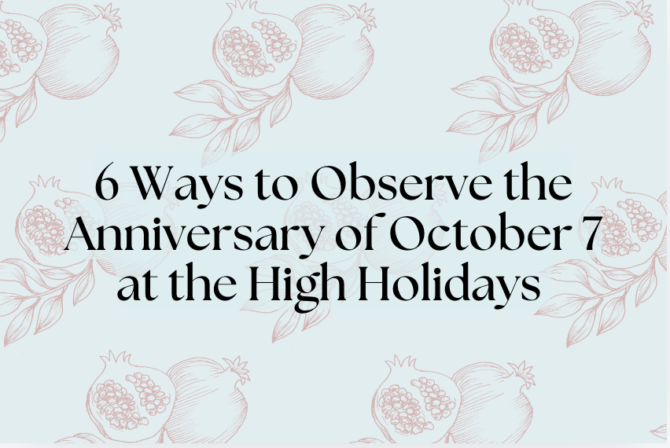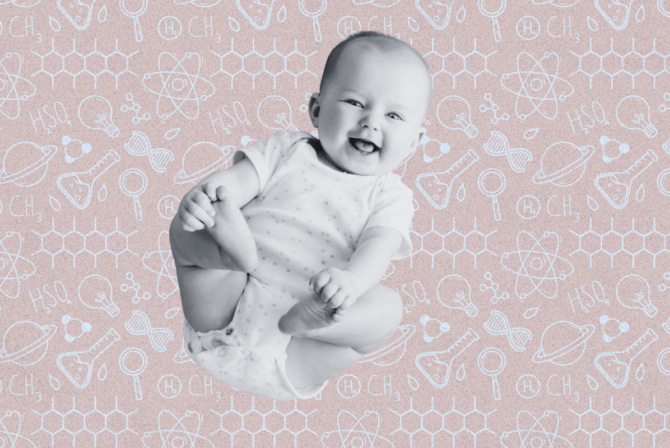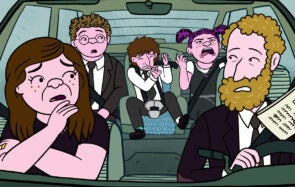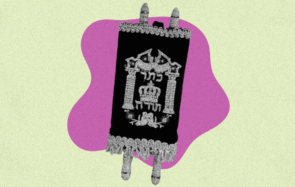“We welcome all Jewish people and Jewish-adjacent people.”
I first heard these beautiful words in the fall of 2023 at a High Holidays service. Being recognized and shown hospitality as a Jewish-adjacent person resulted in my immediately feeling warmth, joy and complete inclusion that I had never before experienced as a Christian in a Jewish temple. It meant the world to me.
My Jewish husband Nick and I know each other from high school orchestra in a northern suburb of Chicago, where Jewish, Catholic and Protestant kids intermingled fairly seamlessly during the late 1970s and early ‘80s. While we certainly have discussed religion over the years, we’ve always felt mutual respect for and interest in each other’s heritages. Since I was a bit more active in my faith, we agreed to raise our children as ELCA Lutherans with regular exposure to Reform Judaism.
Our family situation is certainly not unique. According to the Pew Research Center, Jewish interfaith marriages are not only common but growing in the US, where 42% of married Jewish adults have a non-Jewish spouse and 61% of Jewish people who have gotten married since 2010 are intermarried (when excluding Orthodox adults, that percentage rises to 72%).
Unfortunately, we were forced to amend our religious child-rearing plan. In the late ‘90s after our first son was born, Nick introduced himself and scheduled time for conversation with the local rabbi in order to share our family makeup. This particular rabbi, however, had no use for a young interfaith family and ordered Nick to not bring our children to the temple, since doing so apparently would confuse them as well as unsettle other people who worshiped there.
Laura Rubenstein, a school social worker in Chicago and daughter of a Catholic mother and Jewish father, recalls a similar knee-jerk response in the mid-1980s. “I remember going to a Rosh Hashanah service at [my university] and the rabbi was going on and on about how horrible interfaith marriages are. I felt like dirt. Definitely not welcomed.”
Rabbi Adam Chalom of Kol Hadash Humanistic Congregation and the International Institute for Secular Humanistic Judaism maintains, “Too much of Jewish discourse about intermarriage is rooted in fear, anxiety, defensiveness and exclusivity.” While understandable from a historical perspective, such a negative approach fails contemporary Jewish interfaith families and Judaism in a bigger picture.
In our case, Nick, already a reluctant participant in Judaism, became so discouraged by the rabbi that he eventually discontinued attending temple altogether, leaving me alone to participate in the High Holidays with our children, even with the lack of welcome.
During one of those times, I overheard the person behind me comment, “It looks like we have some Jewish imposters here today,” referring to my very northern-European-looking appearance and my lighter-haired son. I was stunned.
Over the years as a family, we continued looking forward to lighting menorah candles during Hanukkah at home and celebrating Passover with a seder and haggadah readings. Our now-adult sons have held on to these ancient traditions while they’ve followed their own individual spiritual paths. I also encouraged our sons to take Birthright trips to Israel, which proved valuable. But nothing took the place of what a welcoming temple might have provided. And when Nick and I transitioned to empty-nesters, I stopped attending altogether.
In a last-minute decision, Nick and I decided to attend a Rosh Hashanah service last fall, after hearing about a new, young rabbi. When we walked into the temple, we immediately noticed a palpable joyful and light feeling that was solidified further when we heard the welcome that included Jewish-adjacent people. After the service we chatted briefly with the rabbi, thanking him and sharing that we wished someone like him had been available for our sons when they were kids. Most importantly, Nick wanted to return to this place, and so did I.
For me, “Jewish-adjacent” is the term that I didn’t realize I needed until I was introduced to it, and that I believe includes so many individuals in the gorgeous variety of interfaith Jewish families. As Rabbi Chalom explains, “Specifically referring to the person married to the Jewish partner, simply saying ‘non-Jew’ defines them negatively and erases their particular heritage.” I agree; ”non-Jew” makes me feel unseen, like an undefined and unappreciated appendage.
He continues, “You can be ‘Jewish AND,’ as a family or an individual of multiple religious heritage, not just ‘Jewish OR.’” To be sure, while all labels have associated downsides and of course won’t feel right for everyone, “Jewish-adjacent” currently meets me where I’m at.
My husband and our two sons–the most important people in the universe to me–are Jewish. It felt painfully ironic that we were discouraged from actively wanting to participate in a Jewish community because our interfaith family essentially was not pure enough.
The latest welcome that I received as a Jewish-adjacent person was transformative. Had I heard those words as a young mom, I would have felt confident that not only was I not viewed as an imposter, but that I was being valued and enveloped into a community just as I was. Hearing those words now allows me to enter a temple feeling comfortable as myself.
And since the binding fabric of all interfaith Jewish families is love, I hope that such love can be supported and celebrated in all of its forms and with all of its treasured traditions as a form of audacious hospitality.








